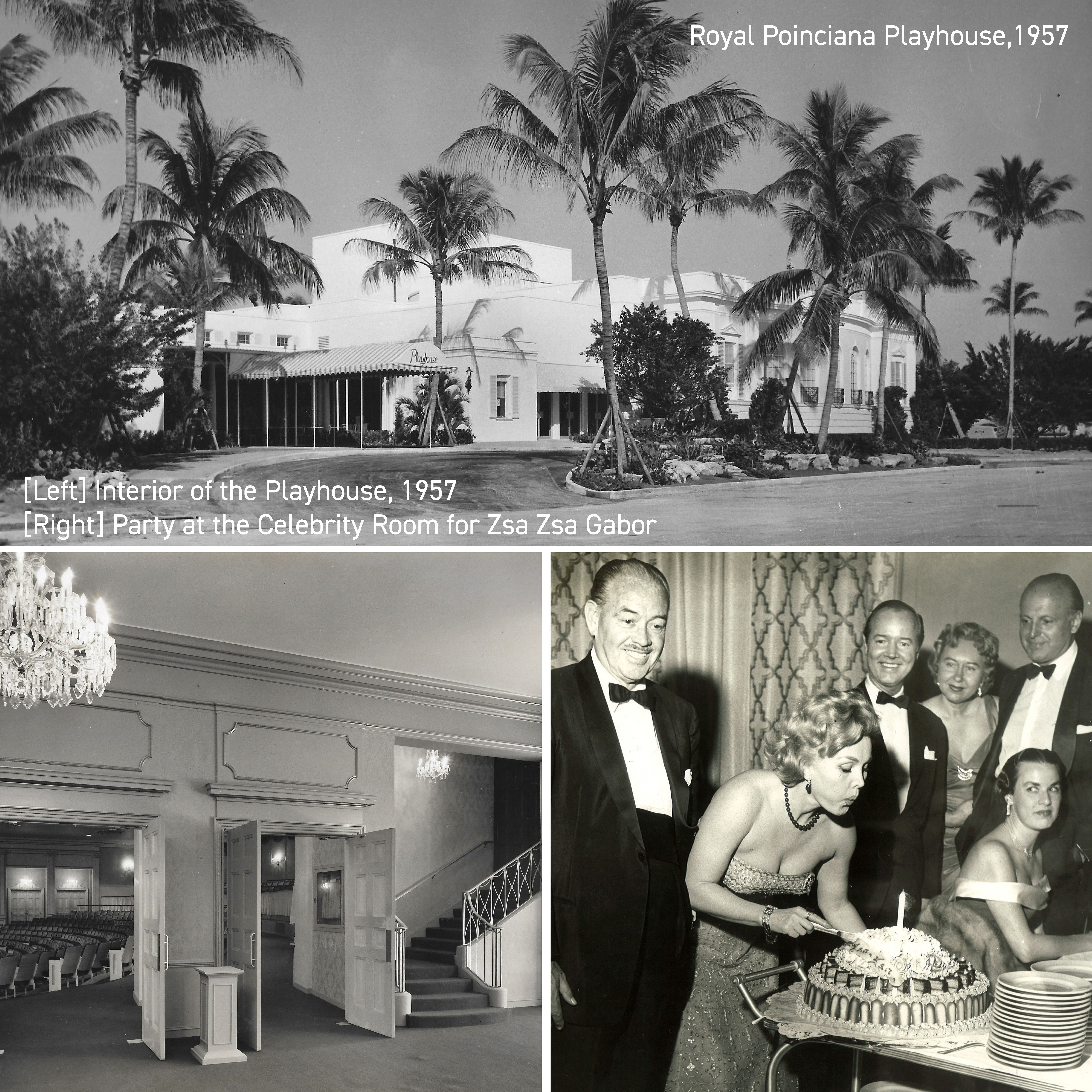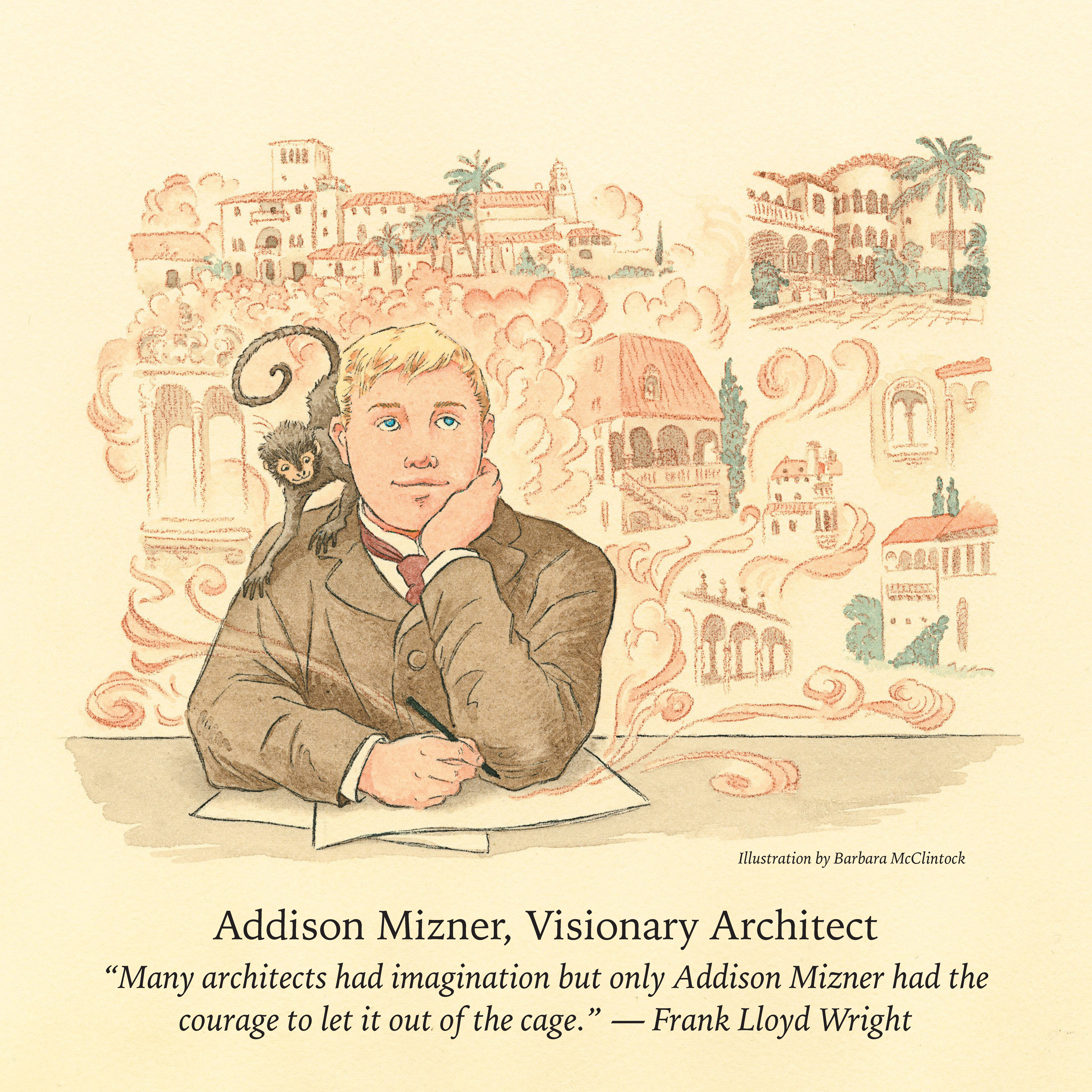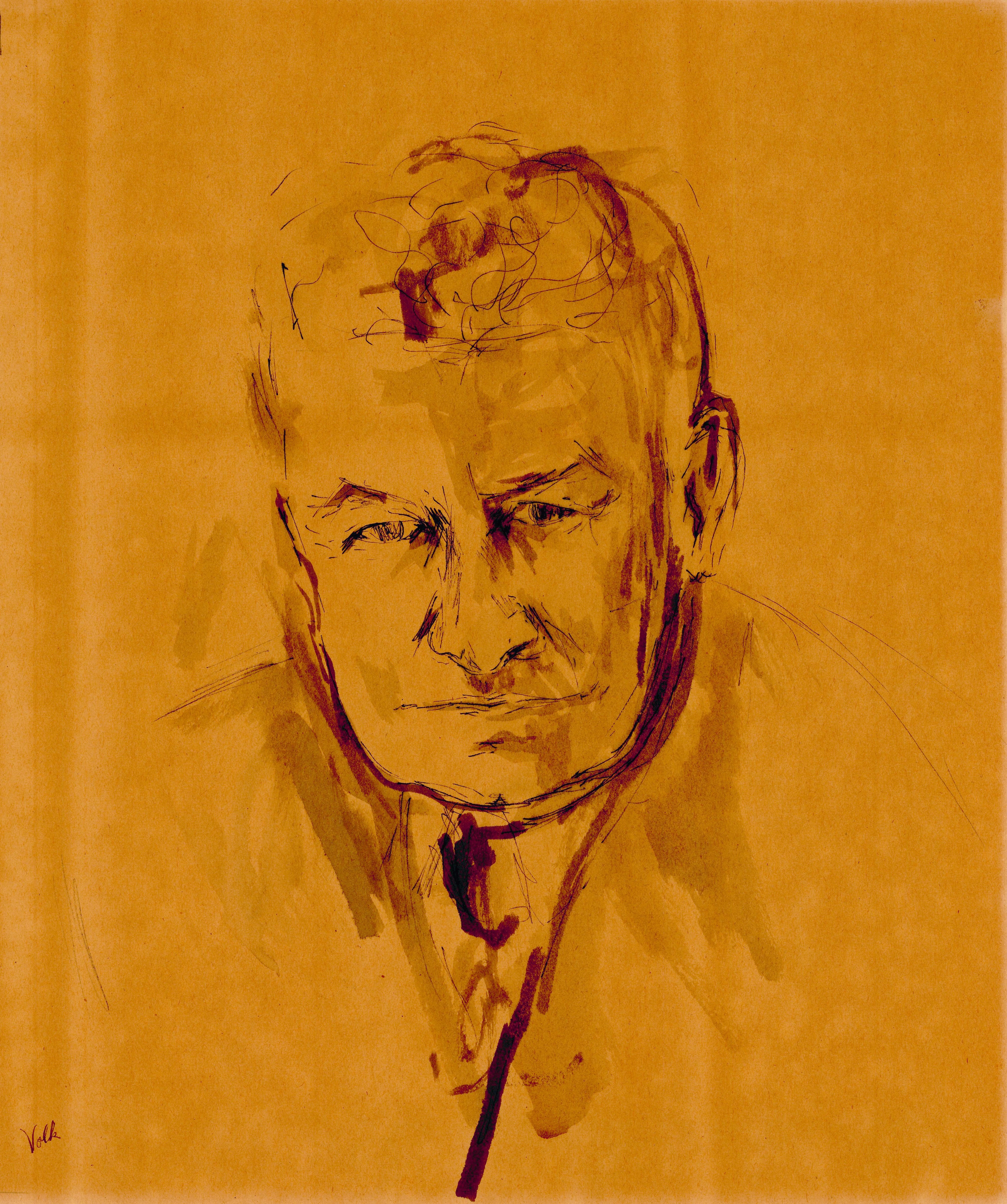
Introduction
John Volk: Composition and Character

John Volk was born in Graz, Austria, and immigrated to New York City at the age of nine with his family. Volk studied architecture at Columbia University and apprenticed with H.P. Knowles, a Masonic architect in New York. In 1925 he relocated to Florida during the real estate boom, and he opened his own practice there in 1926. There is no particular style exclusively associated with Volk; he perfected many styles from Mediterranean Revival to Modern. Regardless of the style, he focused on the composition of the structure and its relationship to the site. Volk’s legacy can be found on almost every street in Palm Beach and throughout the United States and the Caribbean. He was also a member of Palm Beach’s first Landmarks Commission (1979) and voted for the designation of Phipps Plaza, where his home and office were located, as a historic district.
Jane Volk: Art and Preservation
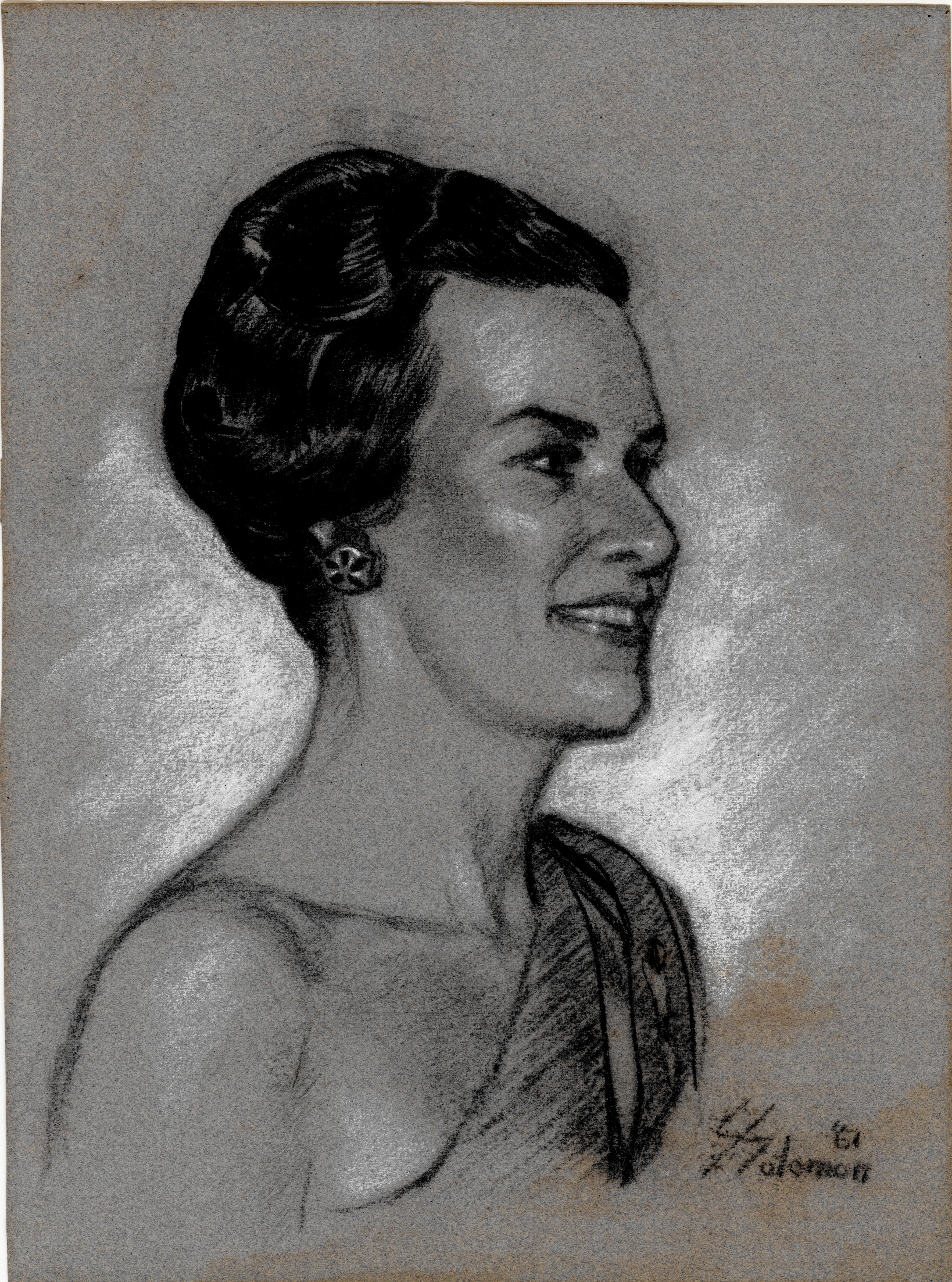
Lillian Jane Kinney Volk grew up in Springfield, Massachusetts, and graduated from the American International College with a Bachelor of Arts degree in 1942. A few years later, in 1947, she met and married John Volk in Palm Beach. During the 1960s she began studying art at the Norton Gallery and School of Art under Eric Lundgren, Robert Moore, and sculptor George Jenkings. In 1965 she was awarded the Purchase Prize in the annual exhibition of the Artists’ Guild of the Palm Beach Art Institute for her painting Flowers. She had her first solo exhibition at the Norton in 1966, which was soon followed by exhibitions at the Parker Playhouse Gallery and the Henry Morrison Flagler Museum. Jane served on the Board of Trustees at the Norton for twenty-four years and was the director of the Board of Trustees from 1979–1981.
After John passed away in 1984, Jane became more involved in protecting the legacy of his work in Palm Beach. She was appointed an alternate member of the Landmarks Preservation Commission in 1987, became a regular voting member in 1989, and served as chairman from 1991 until 1995. During that period, Palm Beach designated ninety-nine buildings as landmarks, almost a third of today’s total roster.
Click here to learn more about the Volks.
Architecture is the center of civilization and in that context, I do not mean just the mansions of the rich. Design and architecture are for every man to appreciate and cherish.
Credits
Curated by Marie Penny & Katie Jacob
Designed by Katie Jacob & Amanda Capote
Archival images and artifacts from the John Volk Collection at the Preservation Foundation of Palm Beach Archives, unless otherwise noted.
The exhibition is generously underwritten by Seabreeze Building.
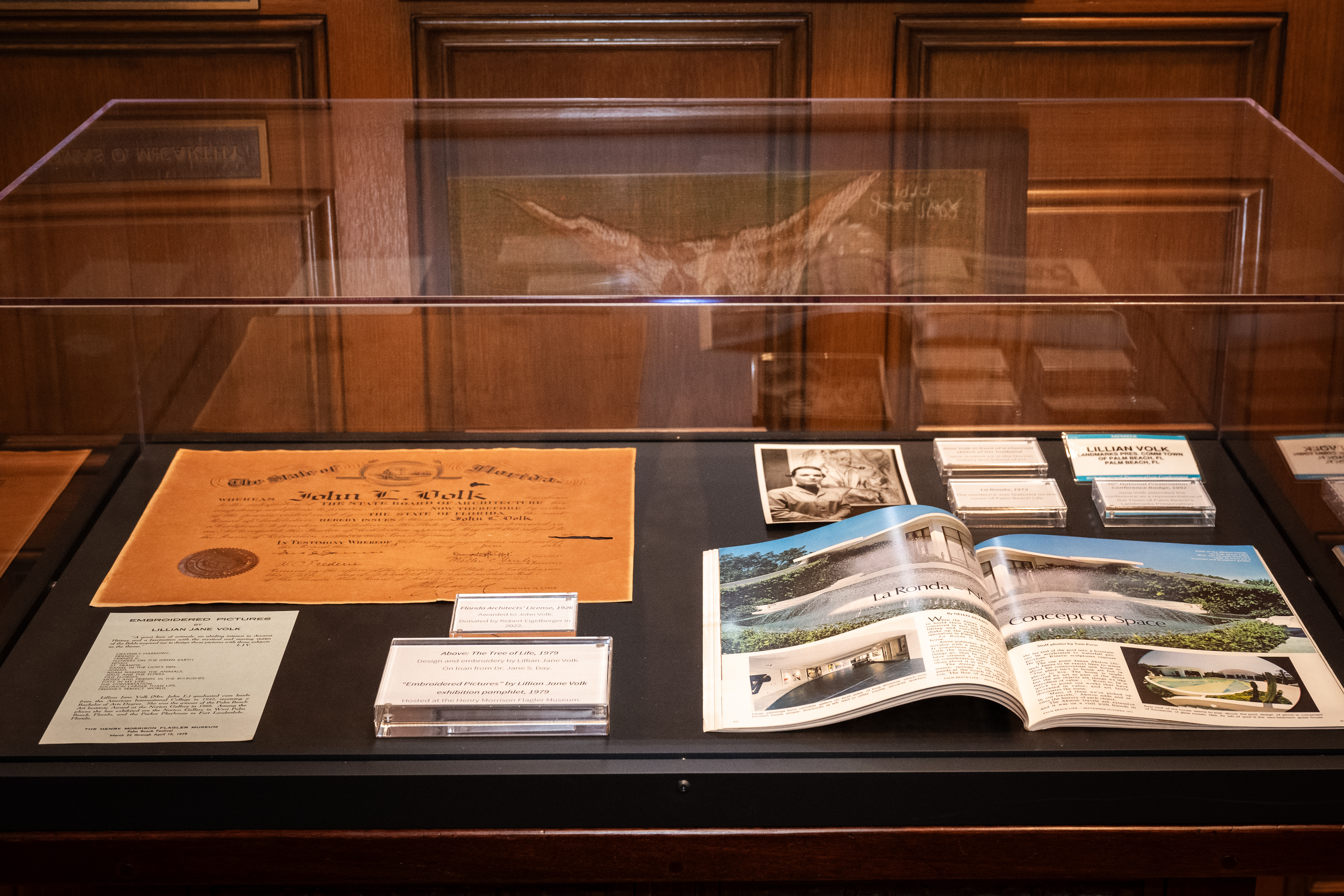
Preservation Stories
Preservation Stories
John Volk’s architectural influence can be seen on almost every street in the Town of Palm Beach. Over his fifty years as an architect, Volk adapted architectural styles to the changing times and needs of the community. While a lot of his work has stood the test of time, many of his most dramatic structures have been lost to the wrecking ball. The story of John and Jane Volk can be centered around advocacy, particularly through their steadfast and gracious support of the landmarks program.

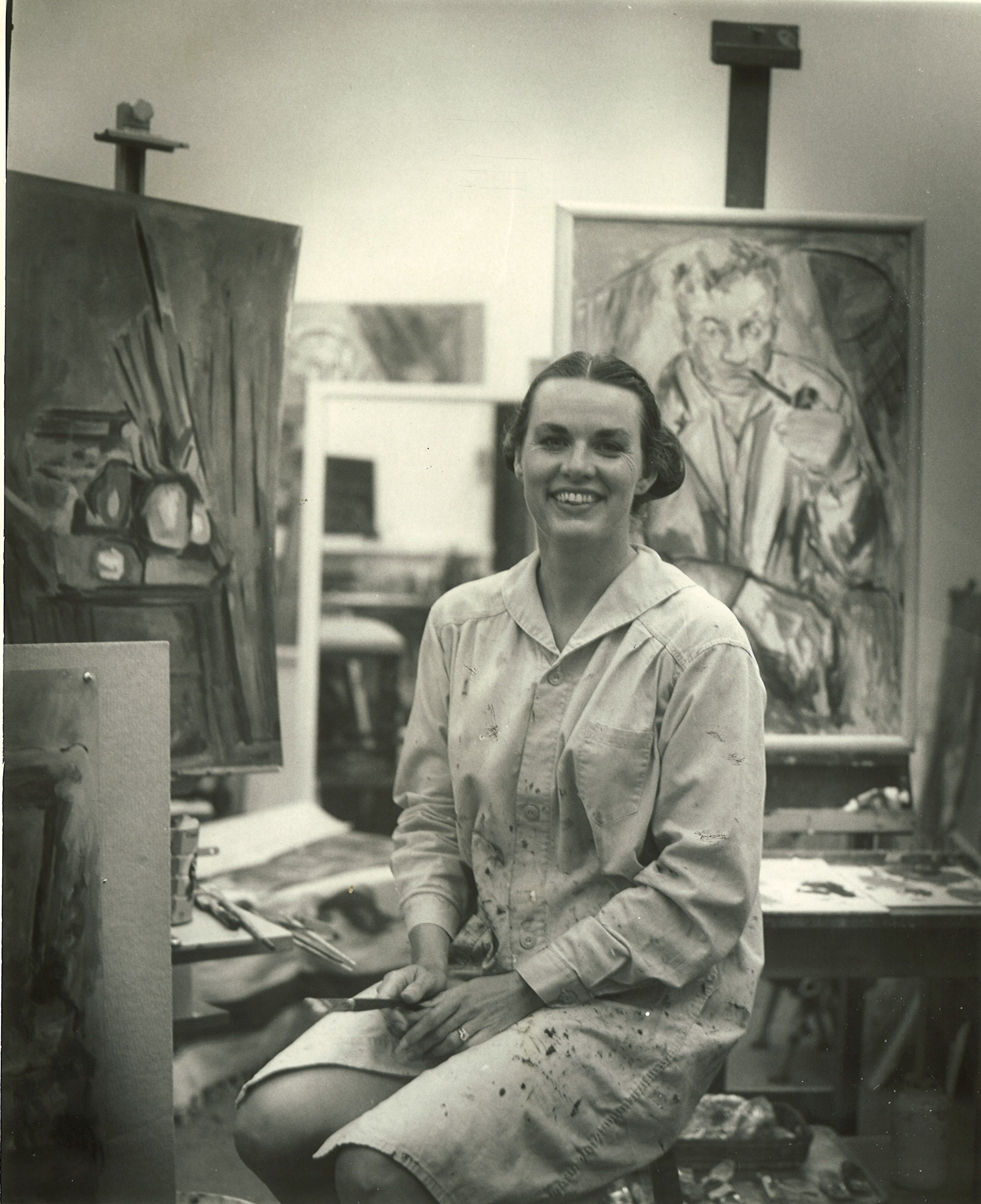
Preservation advocacy has its ups-and-downs and like most battles there are great successes and tremendous failures. Throughout their lifetimes, the Volks participated in many of these preservation issues along with the Preservation Foundation. Sometimes we were on the same side of the battle, but other times we were not. Advocacy in preservation is never black and white—although it manages to take a cyclical route in our town. The Preservation Foundation has learned from its mistakes over the past forty years.
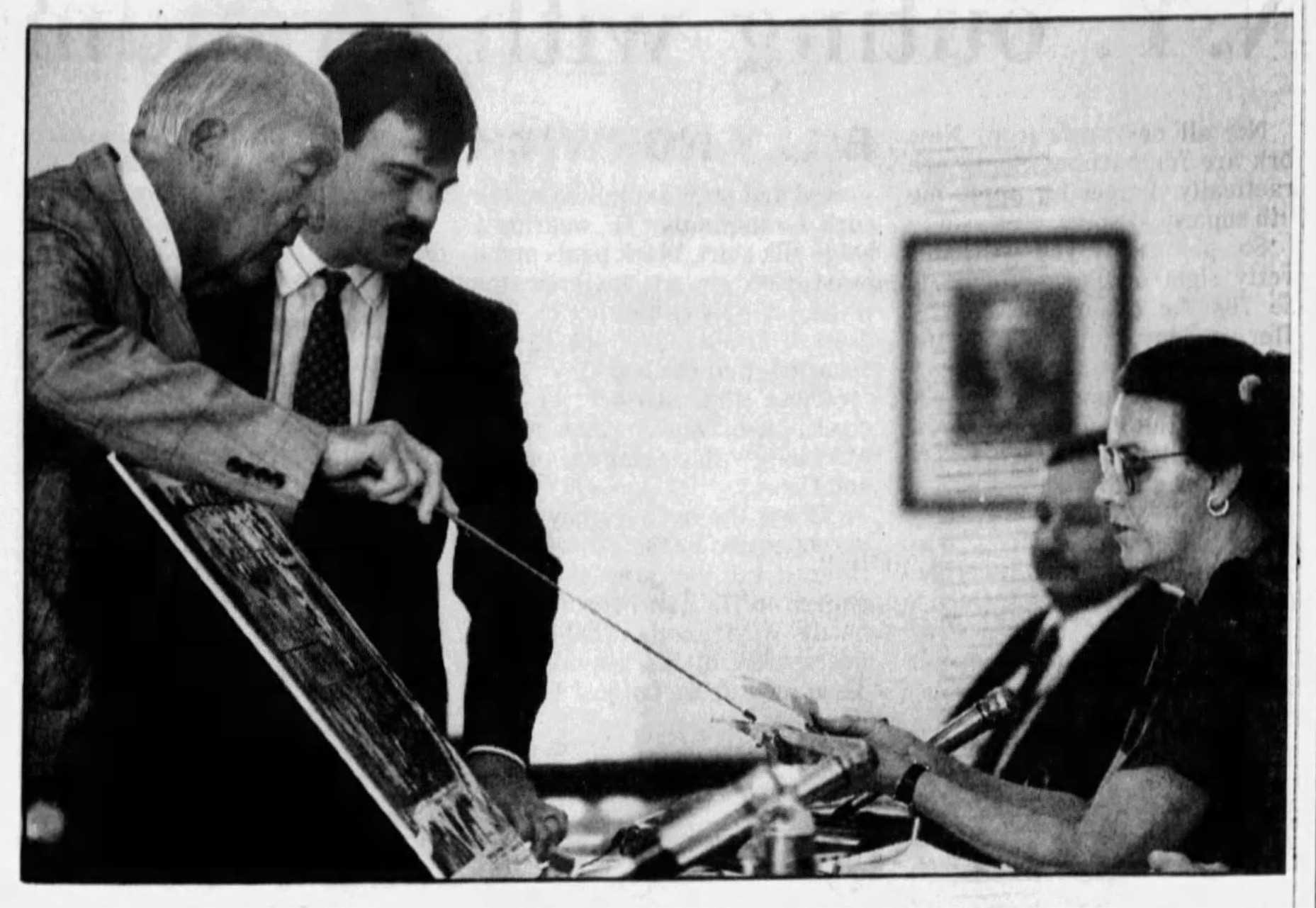
A section from Jane Volk’s speech to the Town Council in 1997 could easily be written today,
“Private citizens are becoming increasingly distressed over the hidden environmental and social cost of the new development surge: and inherent in this concern is a growing awareness of the unique contribution of fine architecture and historic landmarks and a lessor willingness to trade them off in a dubious quest for progress. The retention of fine architecture especially in such a relatively young town as ours lends a certain stability and cultural continuity.”

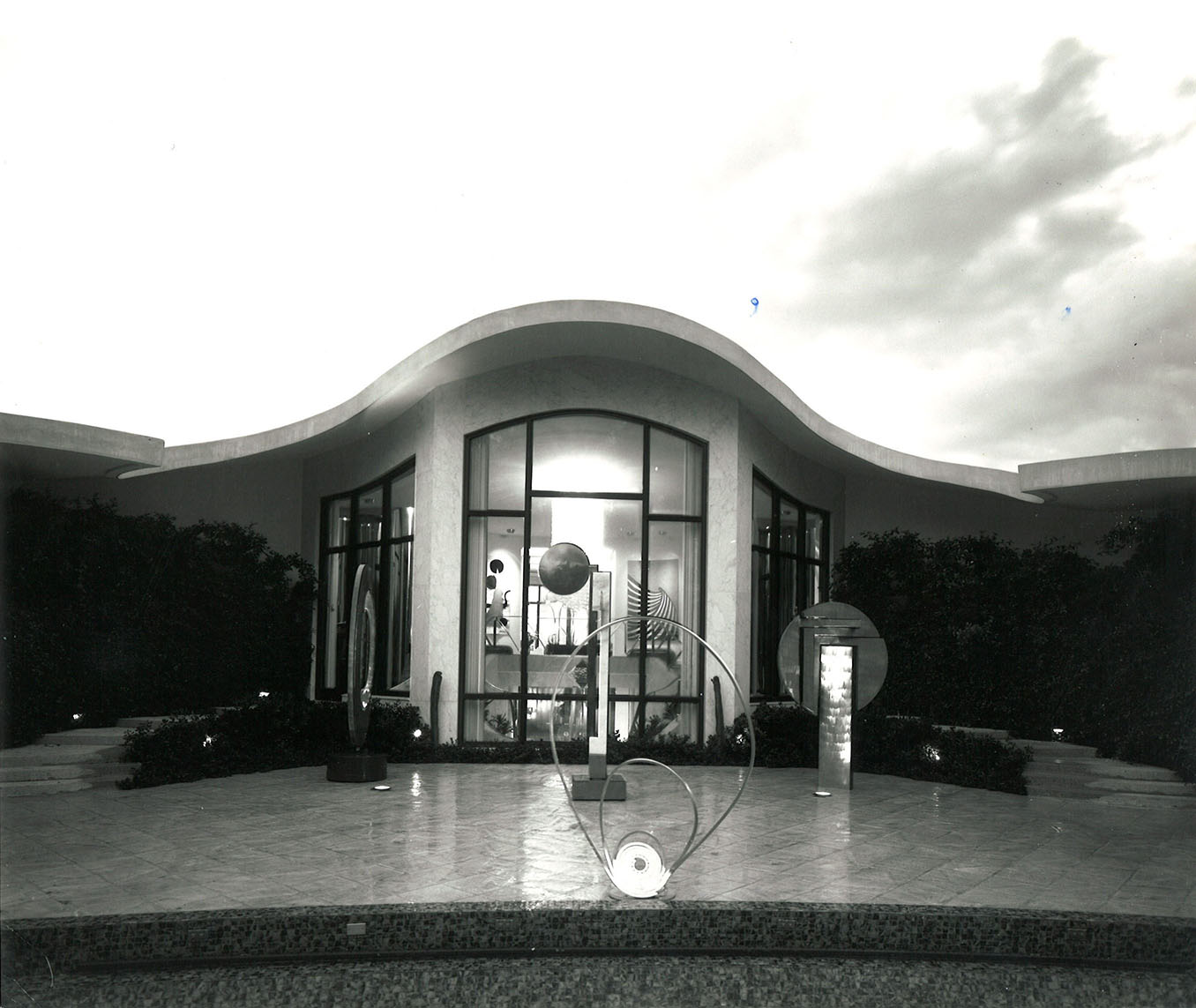
La Ronda
La Ronda

James Akston and his wife Zuita were patrons of the arts, and after meeting with Pierre Delbee of Maison Jansen in France, they sought to create their own work of art on North Lake Way. The Akstons brought back the concept to Palm Beach and asked John Volk to bring the plans to life. According to Volk, Delbee’s plans consisted of rectilinear buildings. After reviewing the site, Volk decided that a spherical design would be better suited. He stated, “The sphere shape takes full advantage and use of the property since it recedes from the property line very rapidly. It is an original conception, having no precedent.” The house was clad in white Italian marble with a poured-in-place concrete roof and was declared “a new concept in space” by Palm Beach Life.
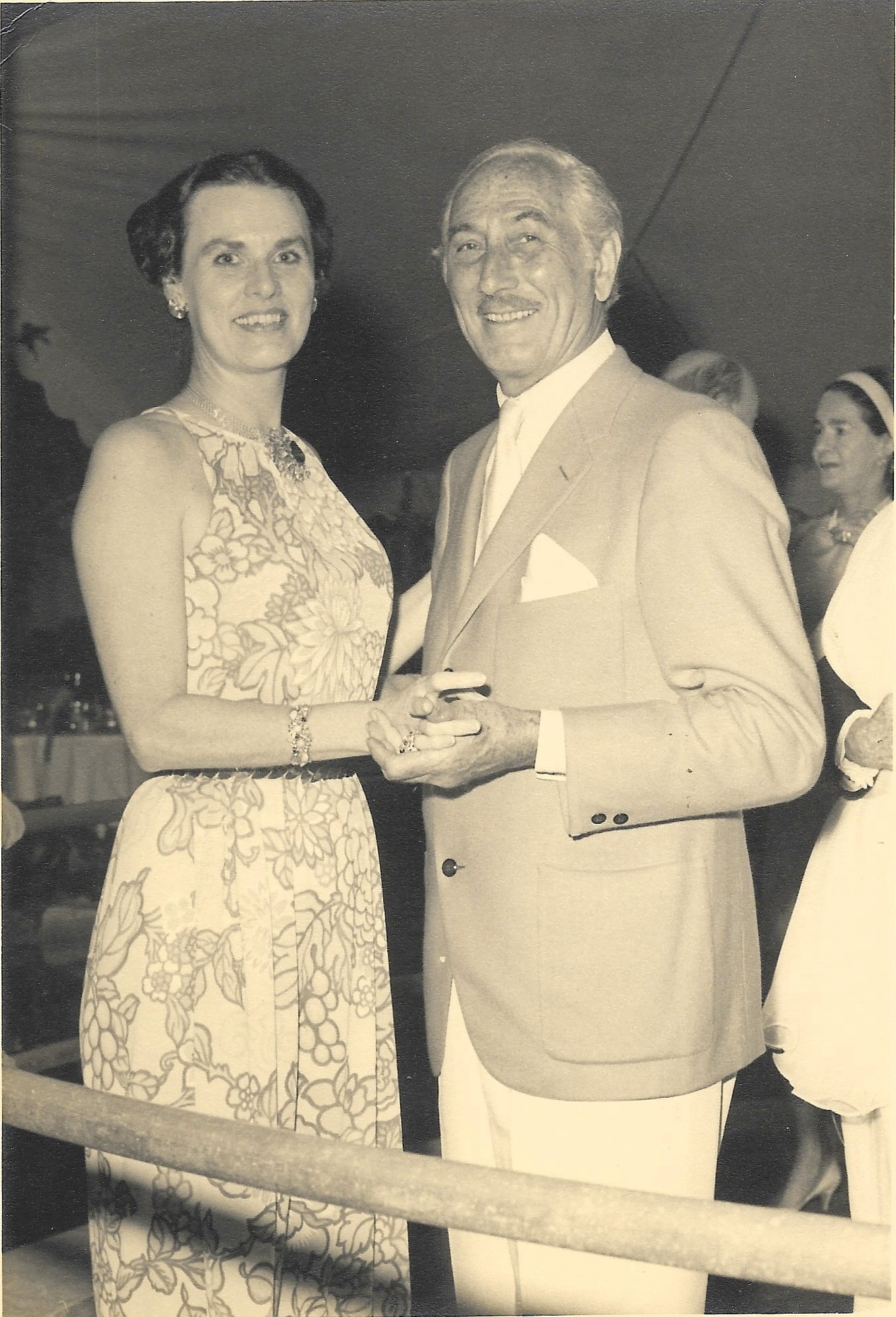
At the beginning of the millennium, buildings that were not quite fifty years old were evaluated by their age over their stature. They may not have fit the definition of a classic historic structure; however, their design ingenuity and impact were significant. In fact, the Preservation Foundation held steadfast to this belief putting them at odds with the designation of La Ronda.
Twenty-four years later, the debate began about what defines the criteria for landmark protection. The discussion was not exclusive to Palm Beach, as preservationists across the nation began to evaluate newer buildings built during and after the mid-century. In 1997, Volk’s 1967 “Pagoda House,” which he characterized as “Portuguese Chinoiserie,” was demolished. This action inspired the Town Council to ask staff members to research buildings that were not quite fifty years old that could meet the criteria for landmark protection. La Ronda was one of those buildings. What followed were many contentious hearings, where Volk’s credit as the original designer of La Ronda was questioned. The Preservation Foundation also testified against designation, siding with the belief that the house did not stand the test of time. In 2003 the house was sold and demolished.
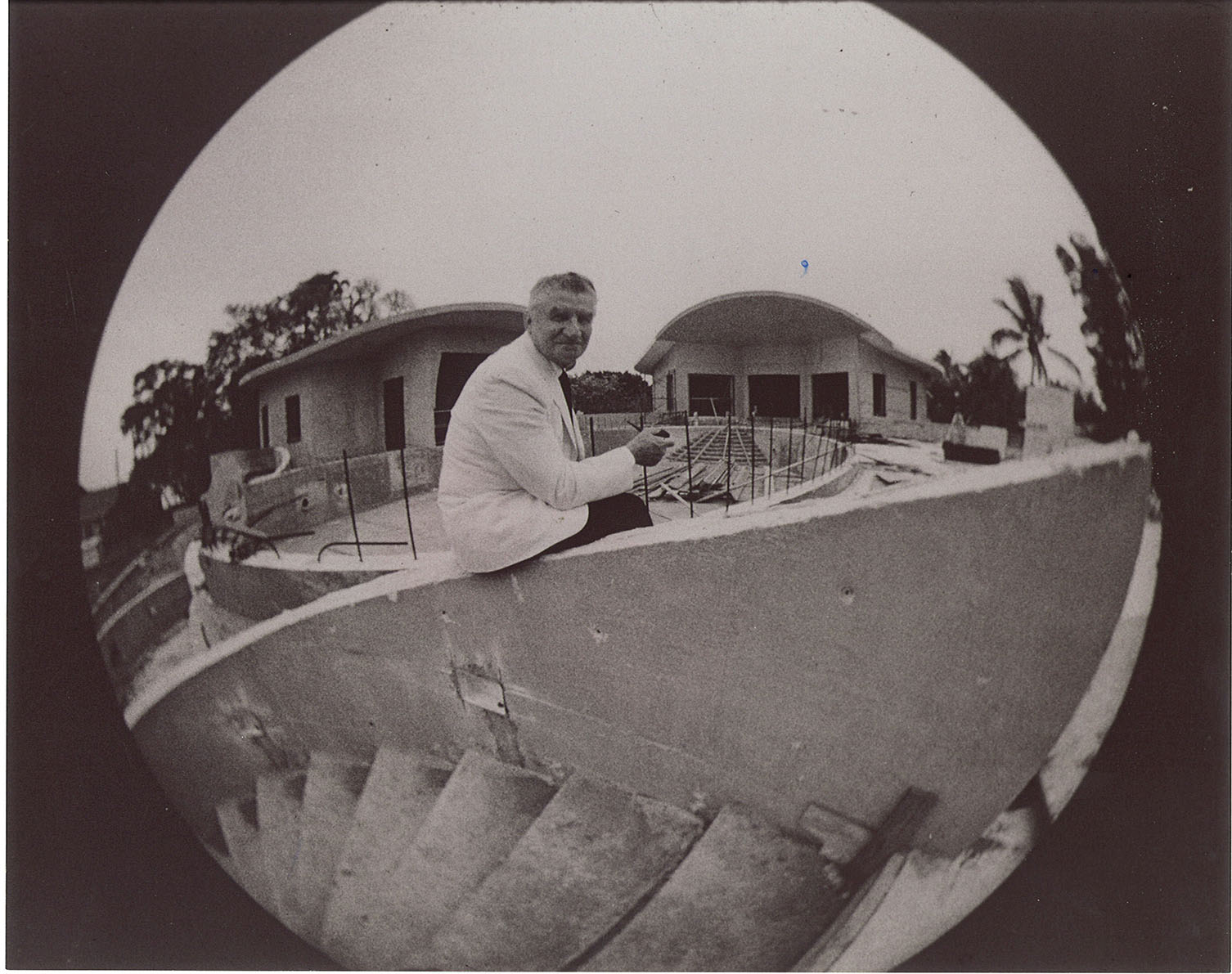
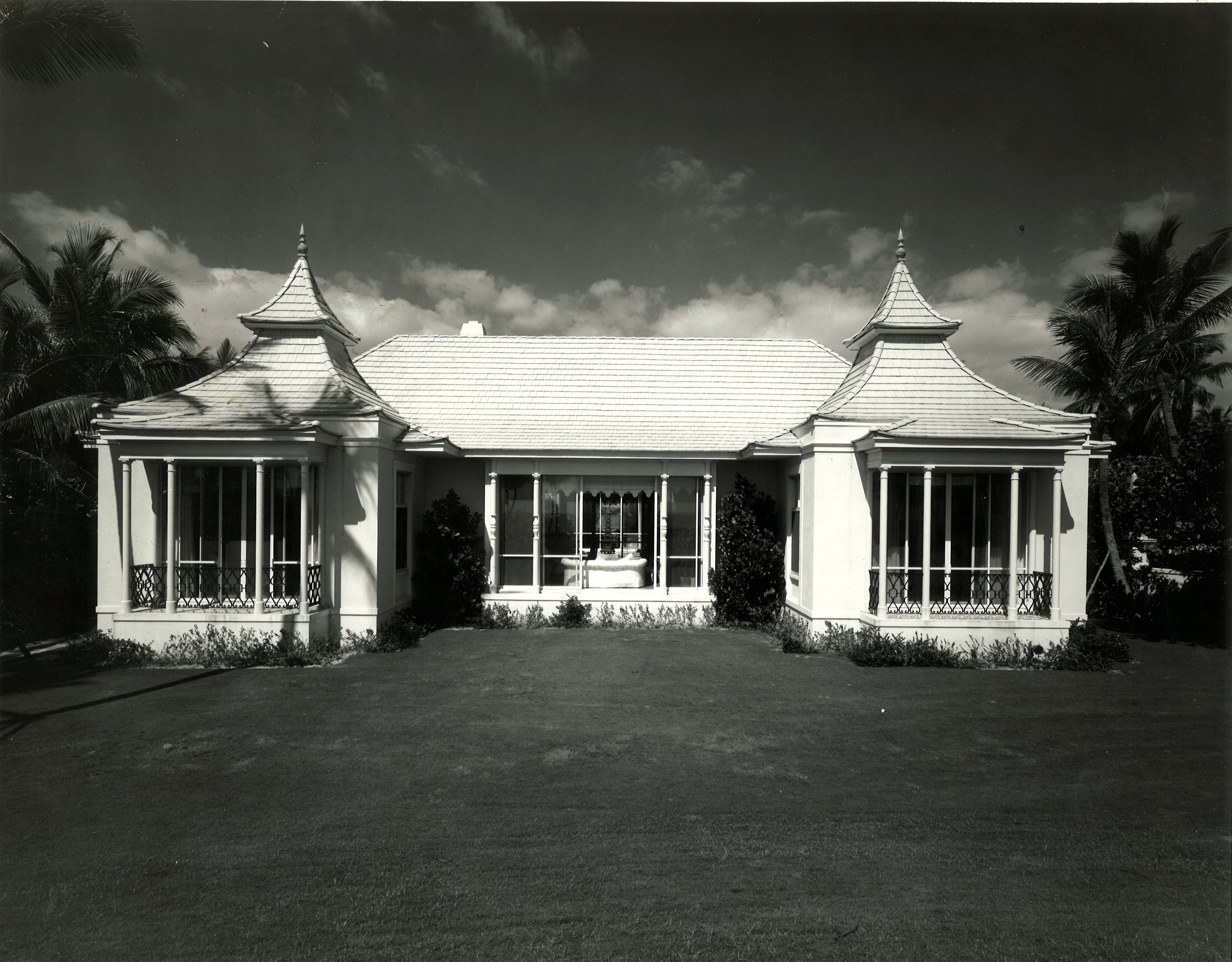
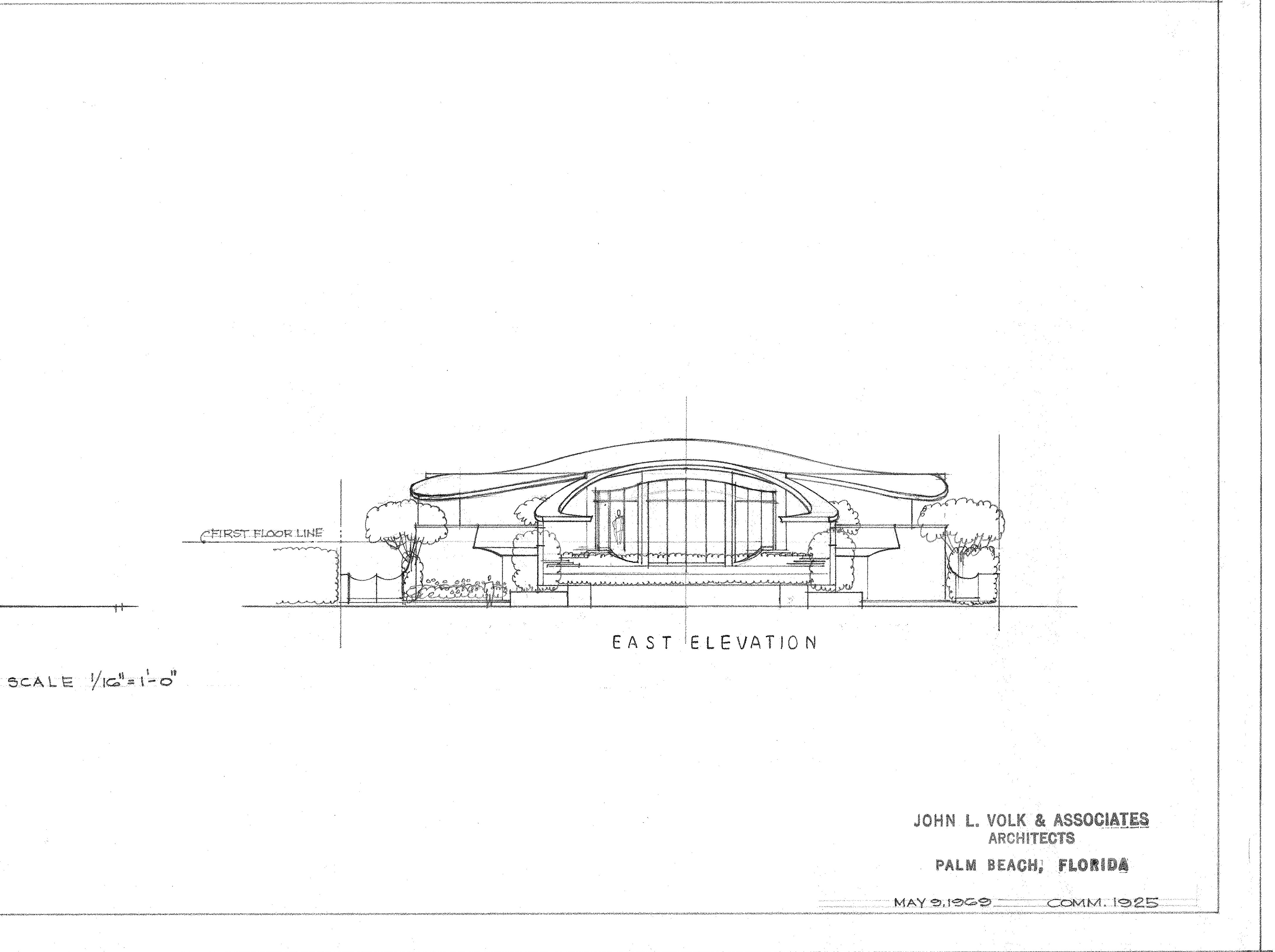
Although we at the John L. Volk Foundation were disappointed that La Ronda was not recognized for its quality or as a remarkable masterpiece by Volk, we are concerned about the state of preservation in the Town of Palm Beach.
2001
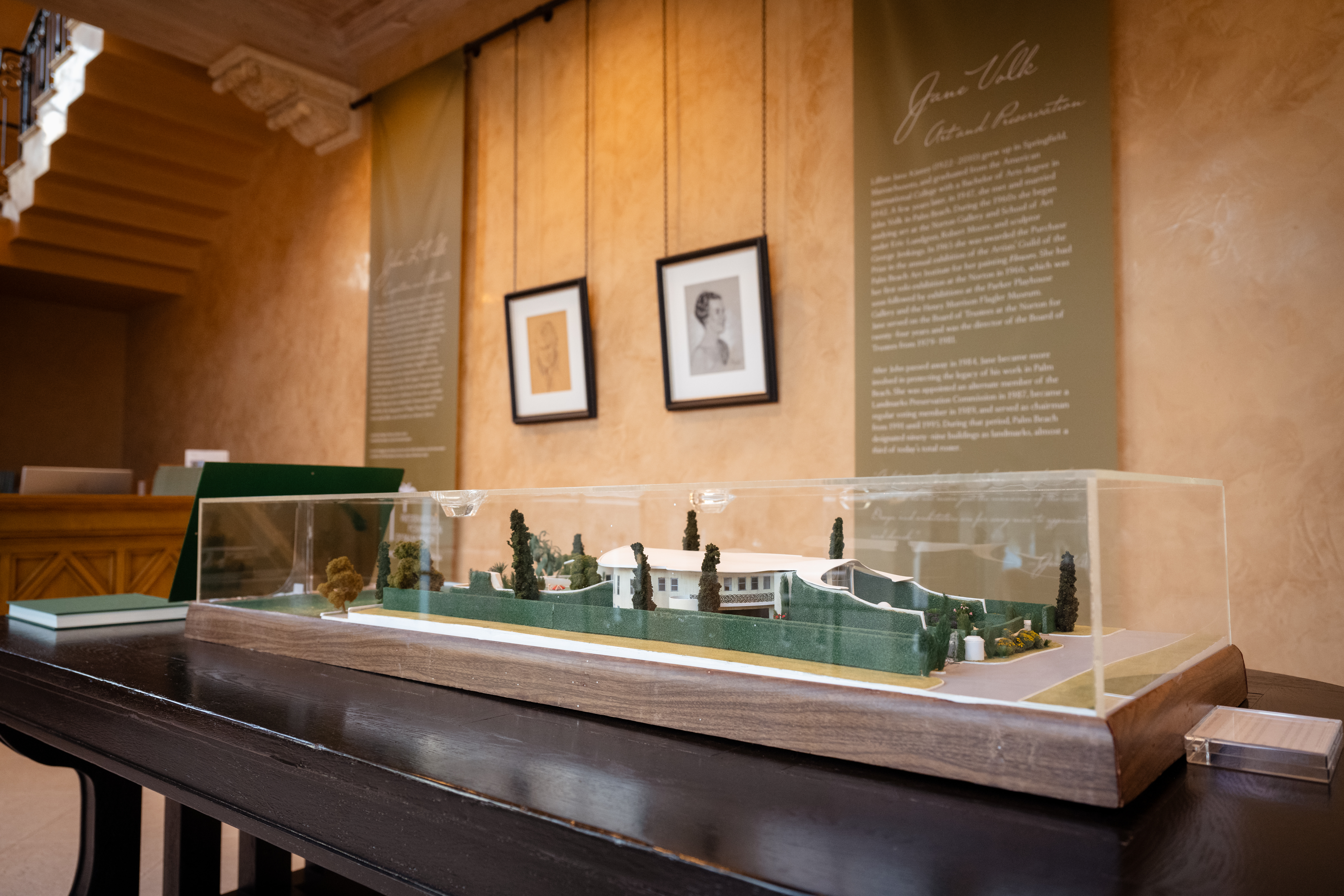
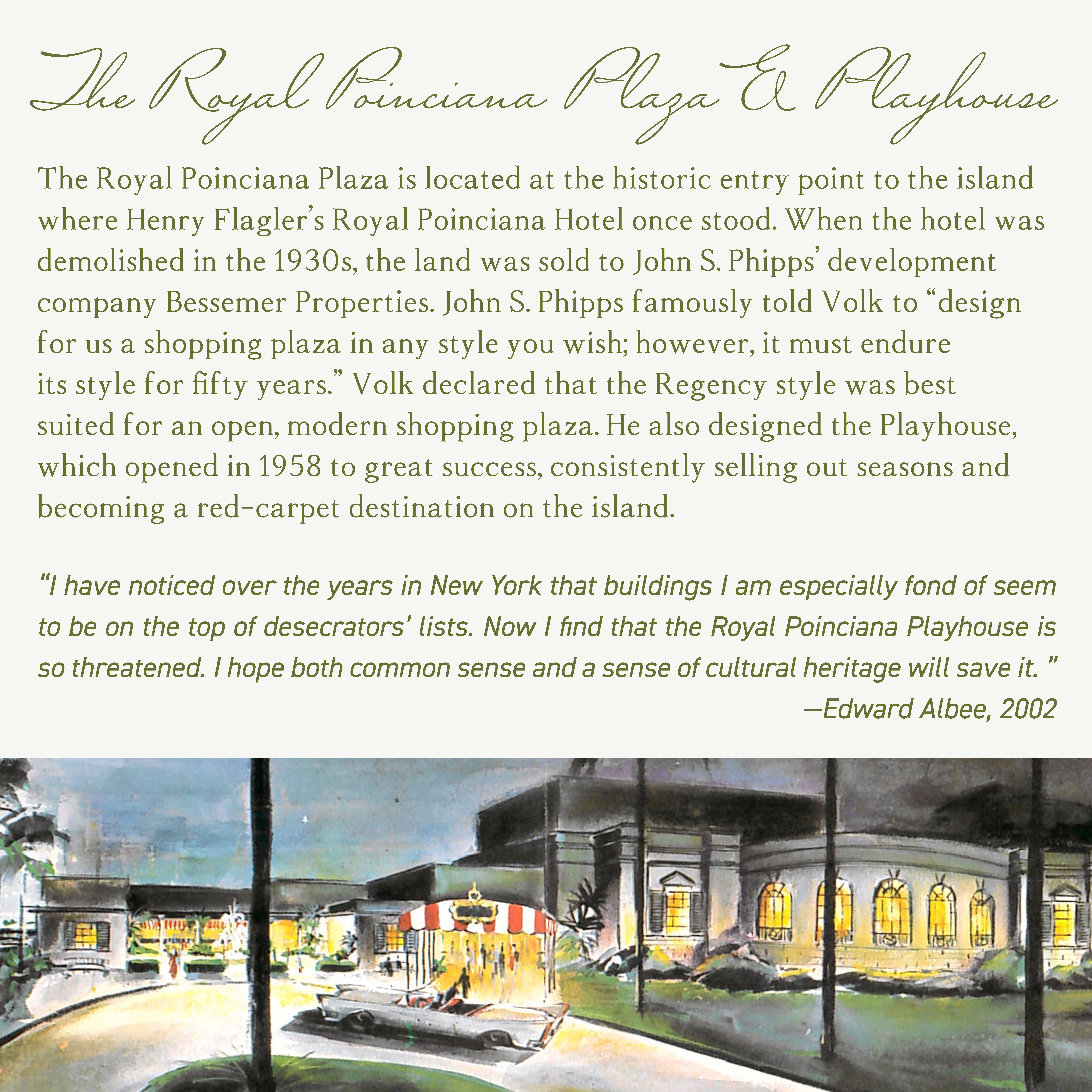
Royal Poinciana
The Royal Poinciana Plaza and Playhouse
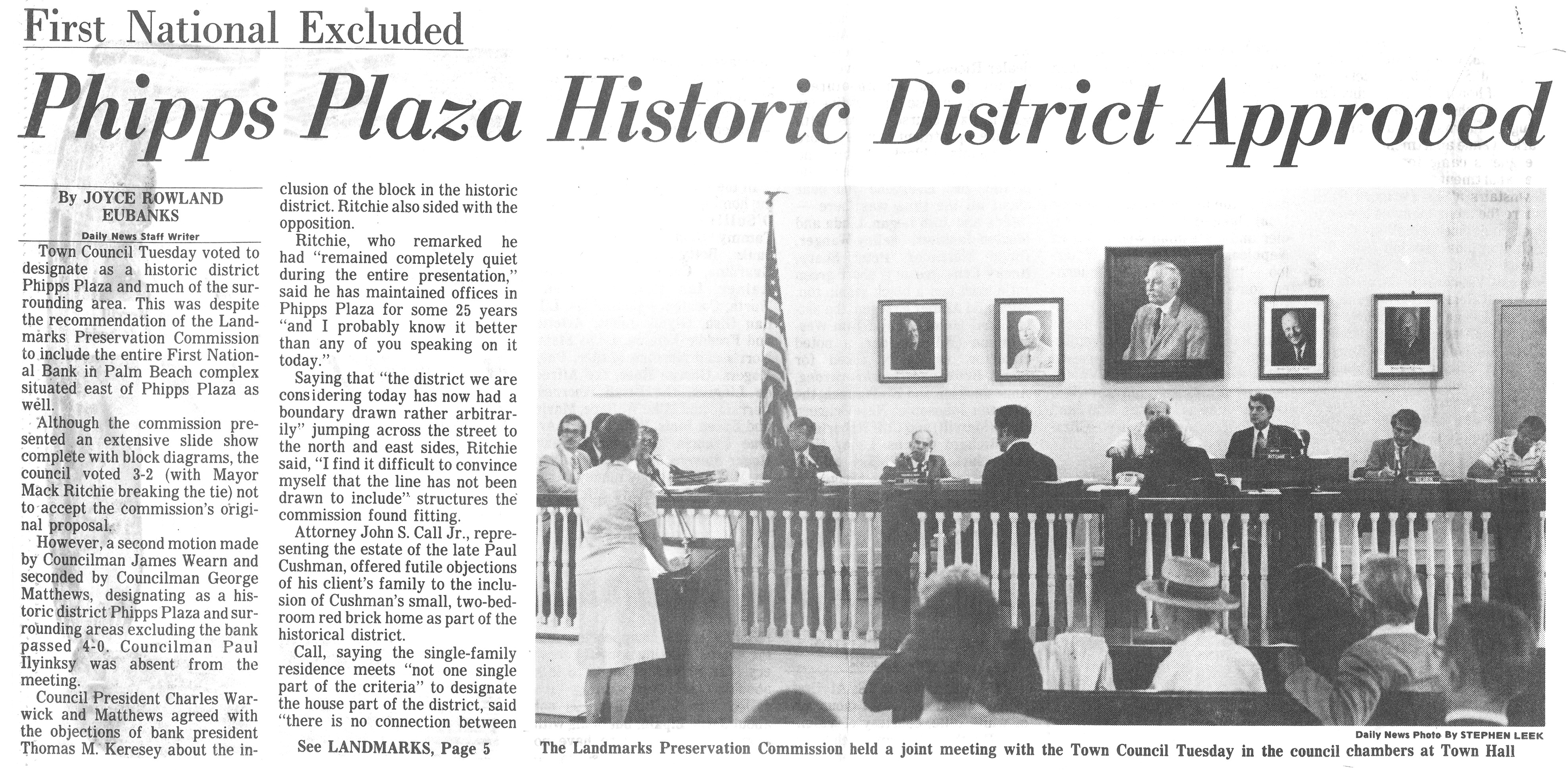
Phipps Plaza
Phipps Plaza Designation

Phipps Plaza started as a development venture financed by John S. Phipps in 1924. Originally called Circle Plaza, the mixed-use neighborhood is centered around an elliptical green space. Commercial and residential spaces designed by well-known Palm Beach architects such as Maurice Fatio, Howard Major, Addison Mizner, Belford Shoumate, John Volk, and Marion Sims Wyeth coexist to create a pleasing model of urban planning.
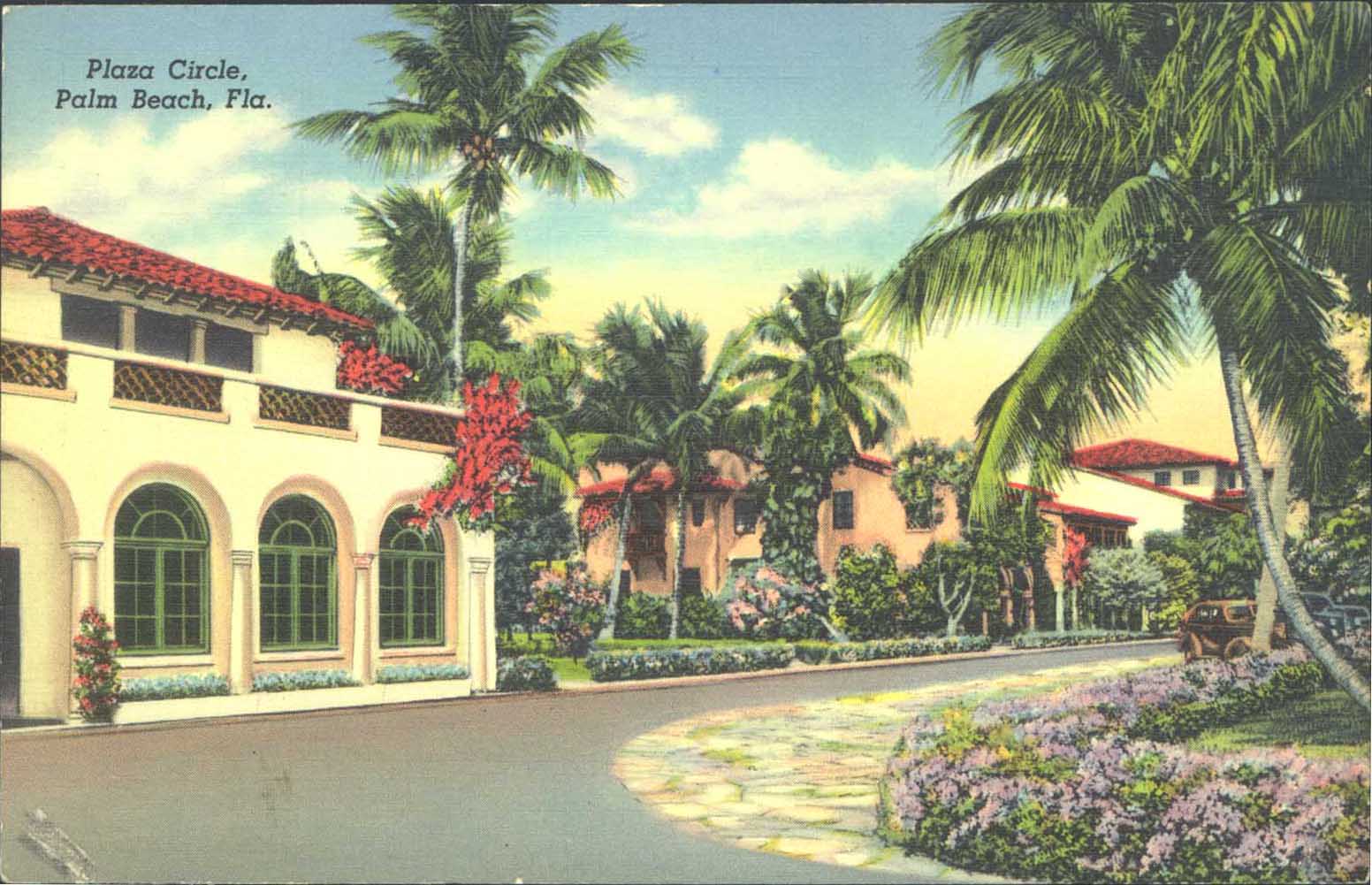
The designation of Phipps Plaza as the town’s first historic district in 1982 would certainly not have happened without the influence of the Volks. John and Jane owned a flat above the shop in Phipps Plaza which they called Casa de Los Arcos with Volk’s architectural practice on the first floor and their home on the second.
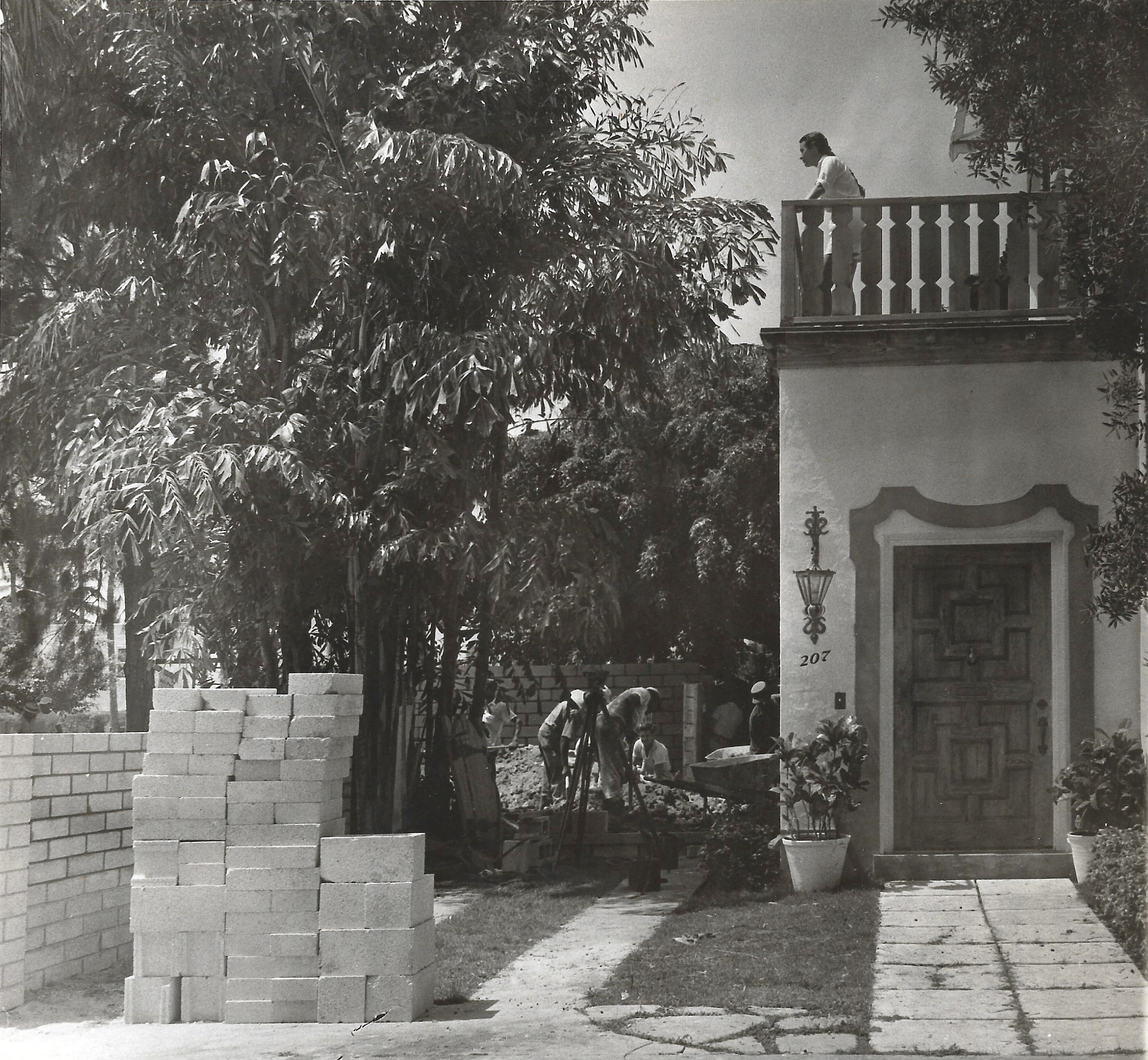
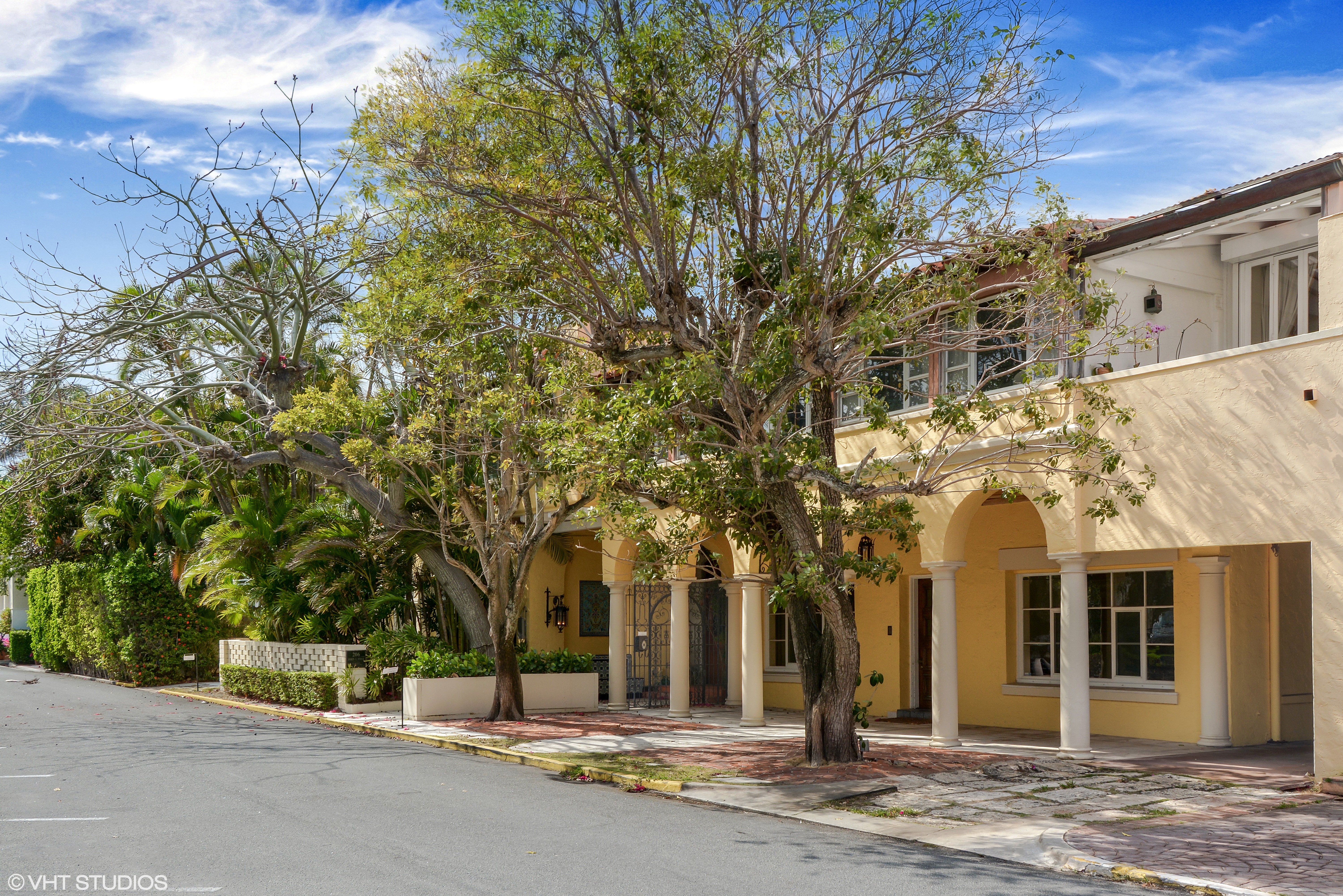
At the time, John Volk was an active member of the Landmarks Preservation Commission, and encouraged the designation of the site at town meetings. Whereas, Jane was able to gather support through her social prowess by hosting the other property owners and encouraging them to accept the designation. The designation of the landmark district went so smoothly that during the landmarks meeting Landmarks Commissioner Barbara Hoffstot declared, “Well that went without fireworks.”
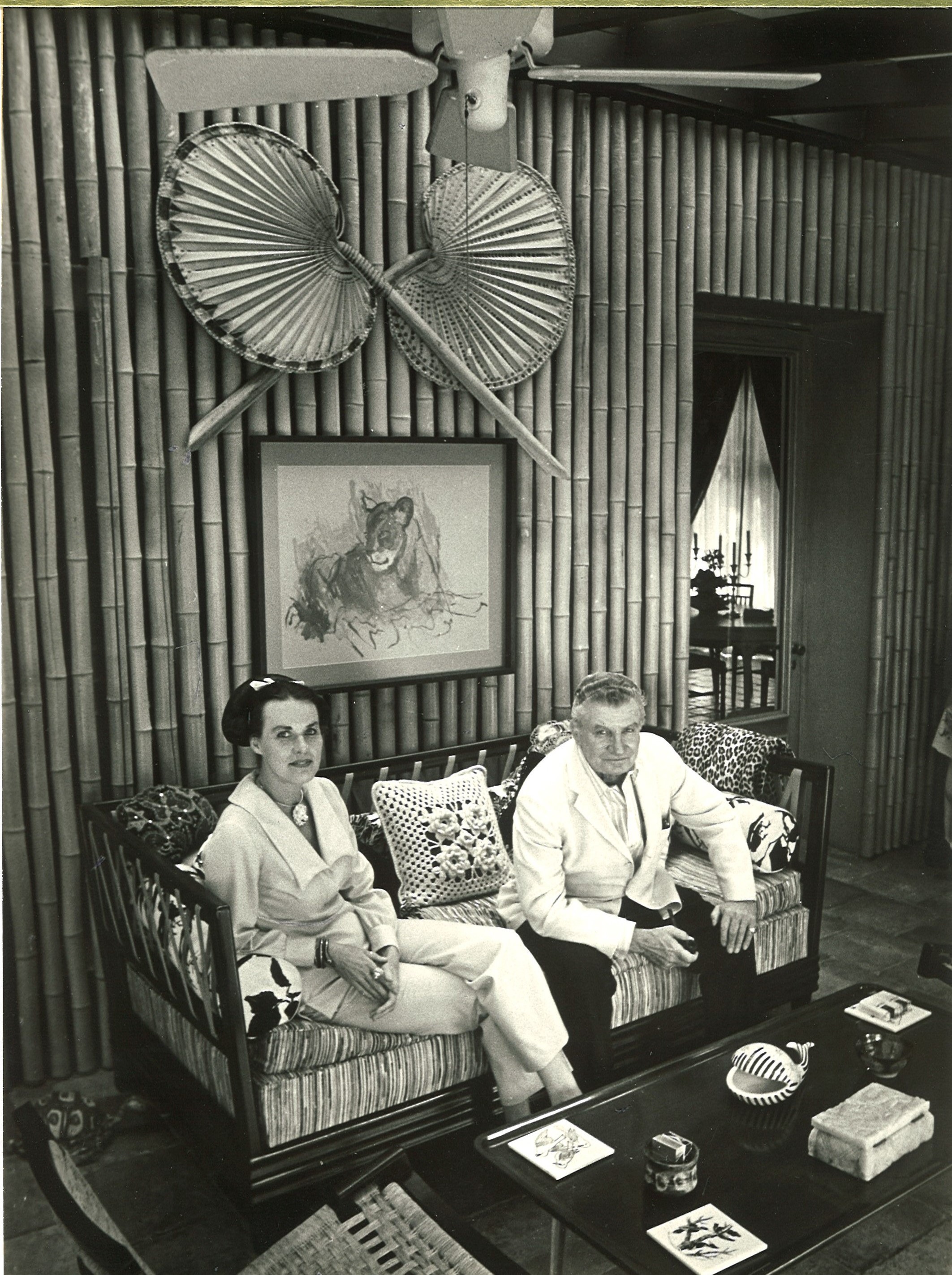
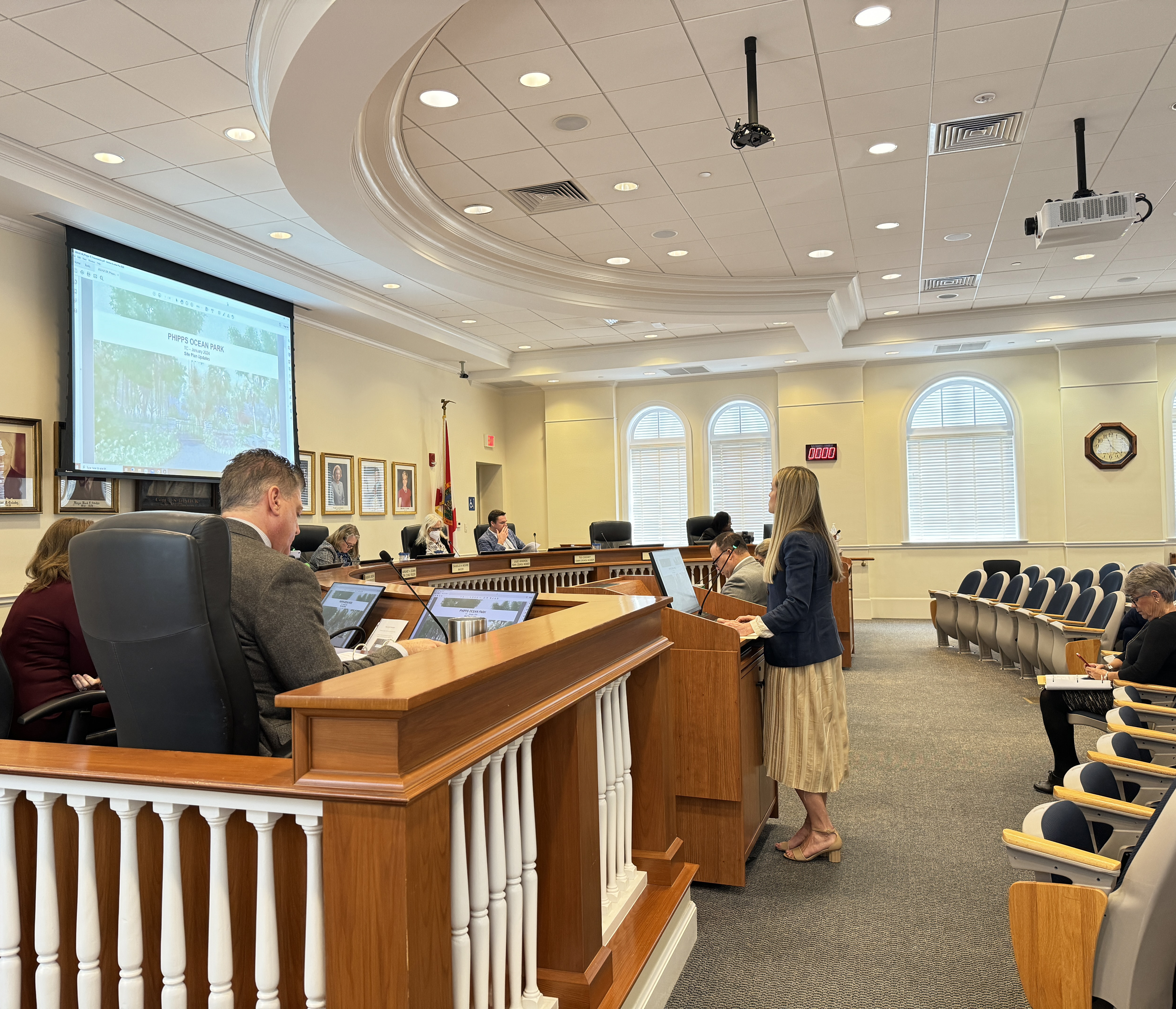
Advocacy Today
Advocacy Today

The Preservation Foundation is honored to carry on the legacy of John and Jane Volk, not only through the preservation of Volk’s architectural archives, but also in our advocacy work. While our philosophies did not always align, the Foundation’s goal is to encourage the town to uphold highest standards of preservation for our community. The Foundation learned through the over-demolition of the Royal Poinciana Playhouse that our job as advocates for this community is vital to manage the necessary changes that happen when a town evolves.
Jane Volk stated that “the beauty of a town is its history in its evolution.” Our advocacy work continues this legacy in understanding the charm and uniqueness of Palm Beach while integrating modern needs for our community. The Preservation Foundation is present at Landmarks and Town Council, and we provide much needed commentary on the changes happening to our cultural landscape.
Something that has kind of gob smacked me is just how important preservation is to this community. Preservation as a concept, preservation as a belief, and preservation as a religion. That is something that until this project came along I really didn’t realize. I give credit to the Preservation Foundation which has been a rock in its advocacy, a rock in making sure that its point of view was followed to the letter. And this conflict, as I say, has produced some lessons learned and some improvements in the process that we can have going forward.
